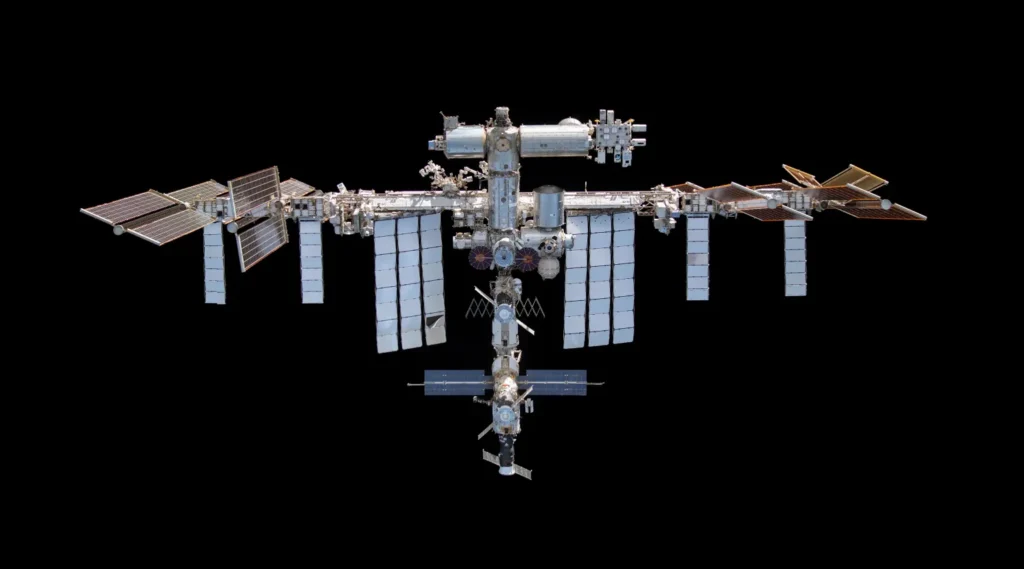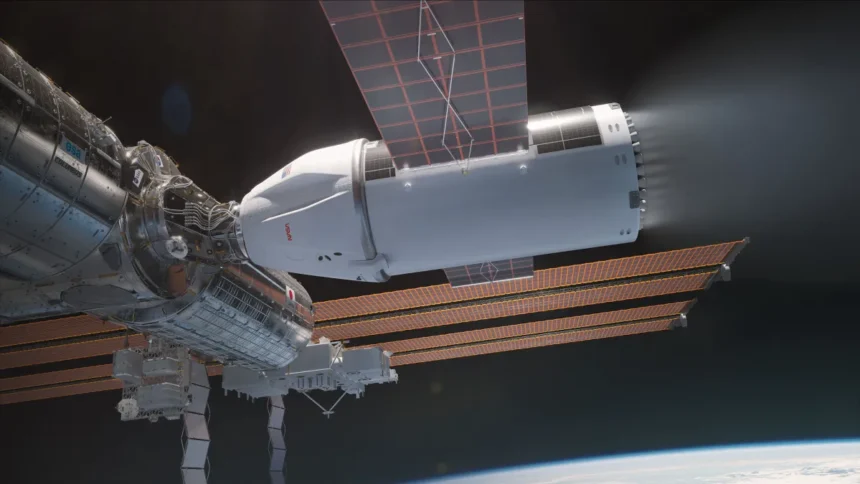SpaceX is designing an $843 million spacecraft to bring down the International Space Station (ISS) at the end of the decade. This new vehicle will be a highly enhanced version of its Dragon capsule, currently used for transporting astronauts and cargo to orbit, the company announced on Wednesday.
NASA awarded SpaceX the massive contract to develop the U.S. Deorbit Vehicle (USDV) last month. It won the award over the only other bidder, Northrop Grumman, partly because the design leverages a significant amount of flight-proven hardware, NASA stated in a source selection statement published Tuesday.
NASA was seeking proposals that maximized the use of flight heritage due to the critical need for reliability, Dana Weigel, NASA’s ISS program manager, said during a Wednesday press conference. Despite significant incorporation of Dragon architecture, about half of the USDV will be entirely new, with 100% of the deorbit functionality unique to this spacecraft, she added.
The USDV’s mission is to execute a series of crucial burns during the final week of the ISS’s life. NASA plans to launch the spacecraft around 18 months before these burns. It will dock at the forward port of the ISS, where it will remain as the ISS gradually “drifts down” to Earth, Weigel explained. The crew will stay onboard for as long as possible to maintain the station’s trajectory but will depart for the final time approximately six months before reentry.
When the station reaches around 220 kilometers above Earth, the USDV will perform a series of burns to set the ISS on a precise deorbit trajectory over about four days, before conducting the final reentry burn. The parts of the station that do not burn up in Earth’s atmosphere will land in a designated uninhabited ocean area. This disposal method is similar to that used for other large spacecraft, like Northrop Grumman’s Cygnus or Japan’s HTV cargo capsule.

The mission is complex, requiring SpaceX to develop a vehicle robust enough to guide the station through increasing atmospheric drag. As Sarah Walker, SpaceX’s director of Dragon mission management, explained, “The most complex and challenging aspect is that this [final] burn must be powerful enough to fly the entire space station while resisting the torques and forces caused by increasing atmospheric drag to ensure it terminates in the intended location.”
SpaceX’s design will feature six times more usable propellant and three to four times the power generation and storage of current Dragon capsules. According to a render released by SpaceX earlier Wednesday, the spacecraft resembles a conventional Dragon with a massive trunk attached to its end.
That trunk will house the extra propellant, power generation, and avionics needed for the mission, Walker said. This includes 30 additional Draco thrusters, alongside the 16 on the standard capsule configuration. A substantial final burn will help ensure that the debris footprint is minimal, although some debris is expected, ranging from the size of microwave ovens to small sedans.
NASA officials confirmed the agency had jointly agreed with its station partners — Roscosmos, the European Space Agency, the Japan Aerospace Exploration Agency, and the Canadian Space Agency — to solicit a deorbit vehicle from private industry after recognizing that Roscosmos-provided capabilities were insufficient for the station’s size. NASA released a request for proposals last fall.
The award comes now because developing such a complex spacecraft can take years, Weigel noted.
Unlike SpaceX’s other significant contracts with NASA, the deorbit vehicle contract is different. For station crew and cargo transportation contracts, NASA purchases services for vehicles that SpaceX owns and operates. However, for the deorbit vehicle, SpaceX will design and deliver it to NASA, but NASA will handle procurement for launch, operation, and bringing the ISS back to Earth.
NASA will start the rocket procurement process about three years before launch in a separate solicitation. Assuming ISS operations cease in 2030, the station would splash down sometime the following year.
Agency officials are eager to ensure an overlap with commercial space station providers in low Earth orbit, though they acknowledged that various factors could disrupt a seamless transition. This includes the development schedules of commercial companies with stations under development, such as Axiom Space, the Voyager Space-led Starlab, or the Blue Origin and Sierra Space venture Orbital Reef. Currently, NASA is approved to operate the station through 2030; beyond that, it would require government approval and cooperation with other partner space agencies, said NASA associate administrator Ken Bowersox.










